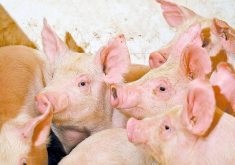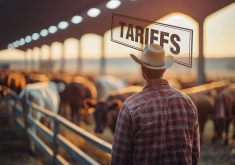Arevamped U. S. livestock tracking system will fail as a safeguard against disease and may imperil $20 billion a year in meat exports, says a key House subcommittee chairman.
The new system would rely on states, instead of the Agriculture Department, to keep track of cattle, hogs and poultry sold across state lines for meat production. USDA outlined the new plan on Feb 5.
Rosa DeLauro, who chairs the Appropriations subcommittee that oversees USDA spending, said it would be a waste to give money to the program.
Read Also

Horns aren’t unlocking anytime soon on livestock transport standards
Standards good enough meet the definition of “humane” animal transportation still vary widely between what what industry wants, what animal rights advocates want and, between the two, what federal regulators decide is good enough.
“I don’t believe it’s going to work,” she said.
Without a workable program, she said, “we’ll take our chances on the international market” where buyers could be leery of U. S. meat safety. Canada, Australia, Argentina, Japan and the European Union have mandatory livestock tracking systems, she said during a subcommittee hearing.
“Madam chairman, we think this system can work,” responded Agriculture Secretary Tom Vilsack.
Vilsack said details of USDA’s “skeleton proposal” will be agreed during meetings with state officials. When asked by DeLauro, Vilsack said it was too early to say when a tracking system would go into operation nor could he say how participation would be enforced.
Panel member Jo Ann Emerson pointed to fervent opposition in her home state of Missouri and asked how the tracking system would work if a state refused to take part.
Emerson said producers are worried about costs, record-keeping, privacy rights and potential liability.
Only a third of U. S. livestock producers participate in the USDA-run program, which has cost $147 million since 2004.














